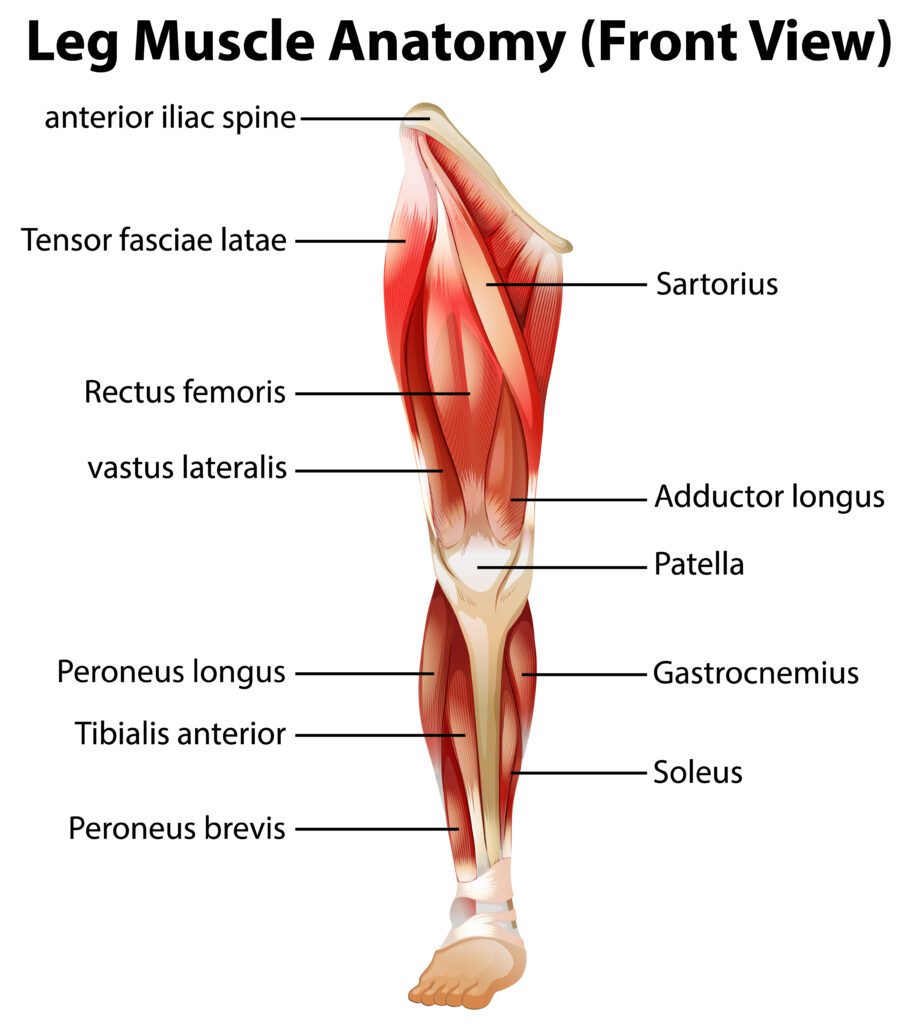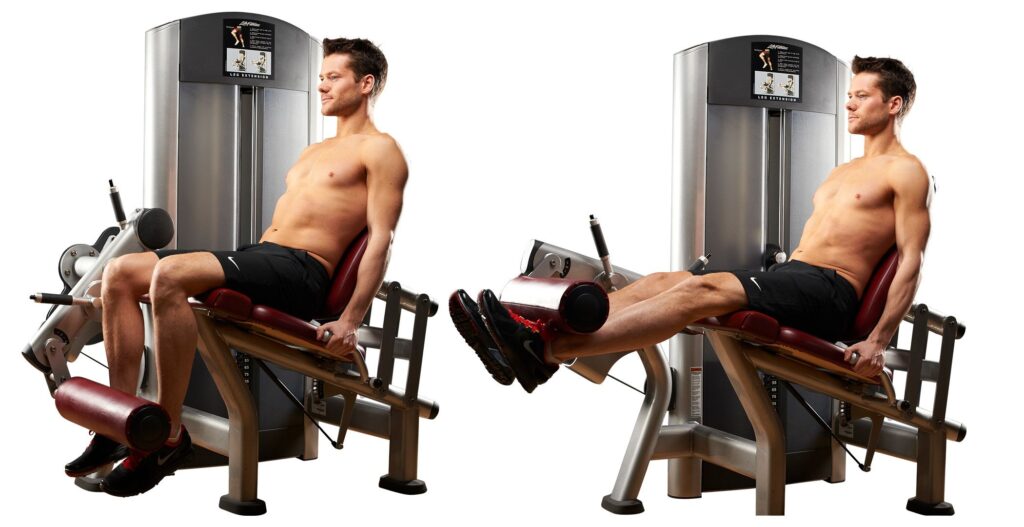
Introduction
When it comes to starting a fitness journey, focusing on legs is often overlooked by beginners(not just beginners) as there is a common aesthetic focus on the upper body, particularly the chest, arms, and abs.
People may prioritize these muscle groups as they are more visible, leading to the neglect of leg workouts. However, working on your legs is crucial for building strength and stability.
Leg exercises not only enhance lower body strength but also contribute to overall fitness. In this blog post, I will provide the best leg workout for beginners but before heading there let’s see why it is important and how the leg muscles work.
Importance of Leg Workout for Beginners
Leg workouts are essential for beginners as they form the foundation of your overall strength and fitness. Strong legs help you in daily activities, improve your posture, and prevent injuries.
By targeting the large muscle groups in your legs, you can also boost your metabolism and burn more calories.
Leg Anatomy


The legs are composed of various muscles that work together to provide support, stability, and movement. Here’s a short overview of the anatomy and roles of major leg muscles:
Quadriceps: As the name suggests, it’s got four components:
- Vastus Medialis
- Vastus Lateralis
- Vastus Intermedius
- Rectus Femoris
These muscles are located on the front of the thigh and are primarily responsible for extending the knee and flexing the hip.
Hamstrings: It has three components:
- Biceps Femoris
- Semimembranosus
- Semitendinosus
These muscles are located at the back of the thigh and facilitate knee flexion and hip extension.
Glutes: It consists of three components:
- Gluteus Maximus
- Gluteus Medius
- Gluteus Minimus
These muscles are located in the buttocks and play a role in hip extension, abduction and rotation.
Calves: Calves have two components:
- Gastrocnemius
- Soleus
Located at the back of the lower leg, these muscles contribute to knee and ankle flexion.
These muscle groups work synergistically to perform various movements such as walking, running, jumping, and maintaining stability.
Warm-up is crucial before any leg workout to prevent injuries and prepare your muscles for exercise. Incorporate dynamic stretches such as leg swings, hip circles and light cardio to increase blood flow and flexibility in your legs.
Let’s dive into the best leg workout for beginners, ensuring you build a strong foundation for your fitness endeavours.
1. Barbell Back Squats:


Squats are a foundational building block for your body. Squats are a compound exercise that activates large muscle groups including your quads, glutes, hamstrings and core. Squats help to increase muscle mass and get stronger.
If you find it hard to add weights to your barbell back squats then first work on mastering the squat movement with just the bar and if that is also hard then do bodyweight squats and gradually work your way up.
From my experience, building good form early on in your squatting journey will help you to be a better squatter in the long run.
Benefits of Squats:
Functional Movement: Squats mimic natural, functional movements like sitting down and standing up, making them relevant to everyday activities.
Bone Density: Squats help to increase bone density, reducing the risk of Osteoporosis.
Joint Stability and Mobility: Picture your joints as well-oiled hinges; squats help maintain their flexibility and stability, preventing stiffness and discomfort.
Posture Improvement: Squats require proper alignment, contributing to better posture and reducing the risk of back pain.
Tips:
- As a beginner try to squat as low as your body will comfortably go, don’t chase the depth too much. hitting parallel(thighs are parallel to the ground) or just below is fine. It’s important to find a depth that feels comfortable for you.
- Prioritize maintaining proper form. Poor form can lead to injuries. Your back should remain straight, and ensure your knees are in line with your toes. Misalignment can lead to unnecessary strain on the joints.
- I like to squat with a slightly wider than shoulder-width stance but as far as stance width goes, shoulder width is about as narrow as I’d recommend going. Research shows that when comparing shoulder width to narrow-width stances there is no difference in quad activation, however, the glutes do seem to be better activated with a wider stance. At the end of the day, you should choose a stance that you feel strong and comfortable hitting depth with.
- Maintain an upright posture, avoiding excessive leaning forward or backward, with no flexion in the spine.
- Everyone has different anatomy in their hips and hip sockets, try playing around with the width and toe angle.
2. Hamstring Curls:


Hamstring curls, also called Leg Curls specifically target the muscles at the back of your thigh(hamstrings). This helps in developing strength, tone, and definition in this muscle group.
Hamstring curl is a very beginner-friendly exercise as you can set the weight according to your comfort level. Strengthening the hamstrings helps to maintain a balanced lower body.
Benefits of Hamstring Curls:
Joint Stability: Hamstring curls engage the knee joint, which helps to stabilize the knee. This is crucial for various activities, including walking, running, and other lower-body movements.
Ease of Access: Almost all gyms have machines specifically designed for hamstring curls which makes it easily accessible for beginners.
Muscle Engagement: To perform hamstring curls correctly, good technique and muscle engagement are required. This not only improves the exercise’s effectiveness but also teaches beginners how important it is to maintain proper technique in their workouts.
Tips:
- Pausing on contraction and slowing down the eccentric helps in the mind-muscle connection. The movement should be controlled throughout.
- It’s important to keep your back neutral during hamstring curls. If you arch your lower back, your hamstrings will not function properly. Your back will do the work instead, which might result in back pain and discomfort. Your knees should be the only thing bending during hamstring curls.
3. Leg Extension:


When it comes to isolating your quadriceps, a well-done leg extension is as good as it gets. Since all four heads of the quads contribute to knee extension the best thing to do is do exercises that train knee extension and the leg extension certainly does that.
Doing this exercise is gonna make your legs look a lot bigger and just like hamstring curls this exercise is also beginner-friendly.
Benefits of Leg Extension:
Isolation of Quadriceps: Unlike squats, the sole focus of doing leg extension is to hit your quads without other muscle groups contributing extensively.
Easy to Learn: The leg extension is a straightforward exercise that doesn’t require complex movements, making it suitable for beginners who are still learning the basics of resistance training.
Joint-Friendly: This exercise has a lower effect on the knees than other lower-body workouts. It could be a wonderful choice for people who have knee issues.
Tips:
- According to independent Electromyography(EMG) results, pointing the toes inwards while doing leg extension results in more outer quads(Vastus Lateralis) involvement.
- The padded bar which you will curl should rest just above your ankle.
- Lower the weights back down in a controlled manner without letting them touch the stack and don’t extend your knee fully if you feel knee pain.
4. Standing Calf Raises:


Standing calf raises are a great exercise to target the muscles in the calves. The standing version is slightly better as it means you keep your knees straight so that it best targets the Gastrocnemius which is the larger part of your calves.
You can do this exercise on a calf-raise machine, a leg press machine or just anywhere with an elevated platform.
Benefits:
Calf Strength: Standing calf raises helps to strengthen and develop the size of the calf muscles. This can contribute to better athletic performance and enhance your athletic appeal.
Improved Ankle Stability: This exercise engages the muscles around the ankle joint, which can contribute to improved ankle stability and balance. They also stretch and improve the strength of the Achilles tendon, reducing the risk of Achilles Tendonitis.
Sports Performance: If you are into sports or a runner then strong calves are crucial for activities that require quick change of direction and pushing off the ground.
Tips:
- A slightly narrower than shoulder-width stance is ideal and keep your feet pointed straight or slightly outward.
- Ensure a slow and controlled motion to maximize muscle engagement and minimize the risk of injury.
Don’t forget to stretch 5-10 minutes after your leg workout to avoid any risk of injury.
Conclusion
I am sure you have heard the term ‘skinny legs’ and if you have you know how frustrating it can be to deal with. I know the feeling as I was the guy with skinny legs before my fitness journey and it was a battle with self-confidence. I found myself avoiding certain types of clothing, like shorts because I worried that my slender legs might draw unwanted attention.
It’s not just about appearance; it’s about the internal struggle to feel comfortable in your skin.
Following this leg workout will help you in your fitness journey so make sure you do it with the utmost sincerity and always remember that fitness is not a sprint, but a marathon.
Take satisfaction in gradual progress and remember that the journey to strength is as important as the destination.
Progress takes time. Stay committed, Stay consistent.
FAQs
1. How many sets per exercise should I do?
2-3 sets per exercise is good enough just focus on the form and intensity.
2. How many reps per set should I do?
8-10 reps for Squats, 10-12 reps for isolation movements like Hamstring Curls and Leg Extensions and 12-15 reps for Calves are ideal.
3. Seated hamstring curls or lying hamstring curls which is better?
Both are great but if your gym has both machines then opt for the seated hamstring curls as you get a better stretch on your hamstrings which is better for hypertrophy.
Thank you for reading! Comment below with your thoughts and suggestions.
Share this article




Thanks for the great article! I’ll definitely be coming back for more.